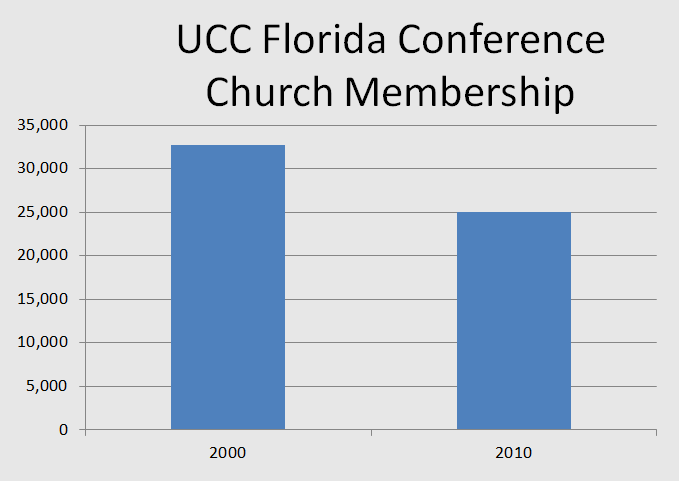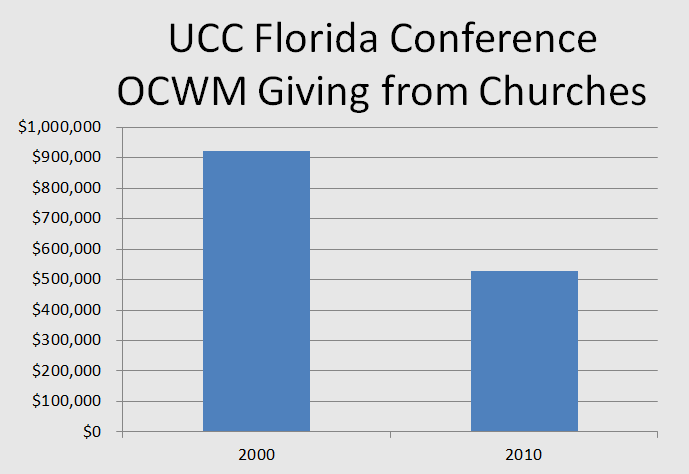I recently received the latest statistics about the Florida Conference of the United Church of Christ. Between 2000 and 2010 membership declined 23.6% and giving through congregations to Our Church’s Wider Mission (provides funding for the work of UCC Conference and National ministries) declined 42.7%.
So What?
The Florida Conference of the United Church of Christ is not unique. Mainline churches have been experiencing membership decline for decades. In the most recent decade funding for regional and national church bodies has declined more rapidly than membership. This shift has led many denominations to give serious reconsideration to structure and staffing. In the case of the Florida Conference the changes will include moving from a full-time to a part-time conference secretary and decreasing the number of regional conference ministers and refocusing the work of these positions around the conference’s new primary goal (“it is the primary goal of the Florida Conference to encourage, help foster and equip local congregations to become vital and faithful communities”).
- On a state or regional level, what do you envision ministerial staff doing that might be effective in helping to “foster and equip local congregations to become vital and faithful communities”? What types of congregations (size, life stage, etc.) are most likely to benefit from these efforts?
- Which of the following choices do you believe best describes the upcoming restructuring in the Florida Conference: (a) right-sizing the staff with greater role clarity, (b) boldly and creatively re-visioning what it means to be a state/regional body, or (c) strategically investing in the revitalization of declining churches and birthing of new congregations? Which of these three do you feel is the best restructuring option for most denominations today? Why?
Note: The data presented in this post is from “Embracing the Vision of the United Church of Christ in Florida,” a memo to church pastors and lay leaders from the Florida Conference Board of Directors (February 15, 2012). The restructuring comes as the result of multiple long term processes and included feedback from stakeholders. I created two charts to provide visual representations of the declines in membership and giving to OCWM.

